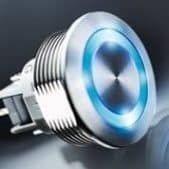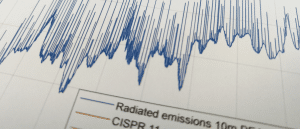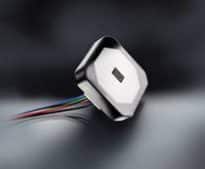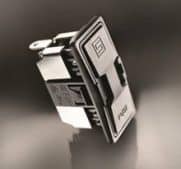Resiliency of Critical Infrastructure Presidential Policy Directive (PPD) -21, Critical Infrastructure Security and Resilience directs all federal departments and agencies to identify, prioritize and provide a plan to protect their physical and cyber critical infrastructure. The U.S. Department of Labor created the DOL Critical Infrastructure Security & Resilience Program … [Read more...]
A Beginner’s Guide to EMP Filters – Part 1
Introduction While many may be concerned by an outright nuclear attack on US soil, the emerging clear and present danger predicted by government and private think tanks is Electromagnetic Pulse (EMP) threats. Such a threat, carried out by strategically placed land devices, could be catastrophic to virtually every facet of our civilization. Organizations both public and … [Read more...]
MSM II – The New Generation of Mechanical Pushbuttons Made of High-Grade Stainless Steel
Santa Rosa, California, September 1st, 2023 – SCHURTER extends its popular momentary pushbutton switch series MSM to include the newest addition, the MSM II. The MSM Metal Line switch family has been successfully used on the market for over 30 years, which is attributed to its durability, precision, and overall high quality. The new generation MSM II stands out even more as it … [Read more...]
Schurter Sets New Benchmark in Reducing CO2 Footprint with New Green Line
Santa Rosa, California, July 27th, 2023 – SCHURTER further embarks on its sustainability initiatives by introducing its new Green Line collection of high-quality components. As part of SCHURTER’s sustainable strategy, these IEC 60320-1 appliance connectors are the industry’s first to contribute to less CO2 emissions and lower material consumption. They are also first in the … [Read more...]
Fundamental Oscilloscope Probes
As electronics have become more advanced, so has the equipment used to measure their signal behavior and system performance. In the realm of EMC compliance, oscilloscopes are one of the important tools used to measure signals, hunt down noise sources, and identify time-domain measurements that may contribute to radiated or conducted emissions. Without a properly selected probe, … [Read more...]
The Voltage Rises
Santa Rosa, California, July 24th, 2023 – In the past, automobiles had minimal electrical systems and relied mainly on mechanical systems. Today, there are many electrical functions such as seat heating and cooling, comfort systems, and assistance systems that draw a lot of electricity from the battery. In a 12V vehicle electrical system, higher and higher currents must flow. … [Read more...]
Radiated Emissions Testing
INTRODUCTION Radiated emissions testing is only one part of emissions testing. CISPR 32, the document that lays out limits and methods of measurement for emissions (radiated and conducted) for Information Technology Equipment (ITE), broadcast receivers and multimedia equipment is 120 pages in length. ANSI C63.4 deals with only the testing part (limits are contained in a … [Read more...]
New Touchless Hidden Switch is Concealed Behind Surface
Santa Rosa, California, August 10th, 2023 – SCHURTER introduces the innovative THS switch series with optical sensor technology that can be concealed behind any surface without the need for mounting holes. A small opening in the user interface is all that is needed to allow the ToF sensor to actuate. Equipment and appliances used in public areas has created demand for … [Read more...]
New FXP Fuseholder with Increased Power Ratings Already Fulfills Upcoming IEC Standard
Santa Rosa, California, June 8th, 2023 – SCHURTER, a leading provider of electronic components, is proud to announce its new FXP fuseholder with increased power ratings. The closed fuseholder provides a solution to a longstanding industry challenge that involves power dissipation limitations for fuseholders used at higher operating currents and temperatures. SCHURTER’s new FXP … [Read more...]
Summary of Military and Aerospace EMC Tests
INTRODUCTION Military and aerospace EMC tests cover a wide range of products. While the standards, including limits and test methods may differ, all EMC test standards have a few things in common. The most basic are the limits for emissions and the types and levels of susceptibility testing. Emissions tests (and their associated limits) are put in place for military and … [Read more...]
- « Previous Page
- 1
- …
- 3
- 4
- 5
- 6
- 7
- …
- 648
- Next Page »













